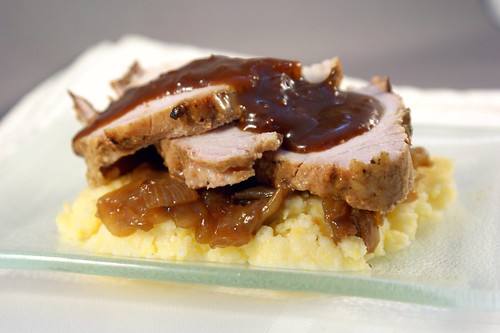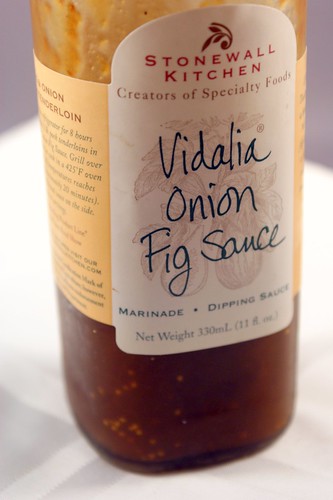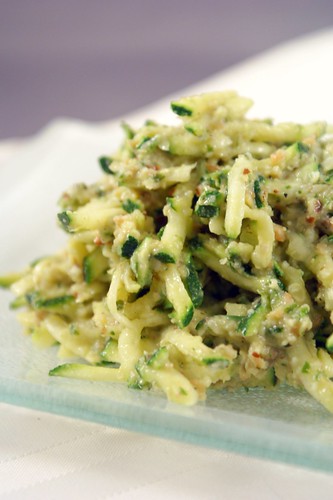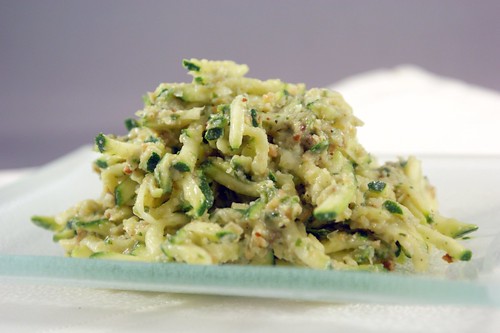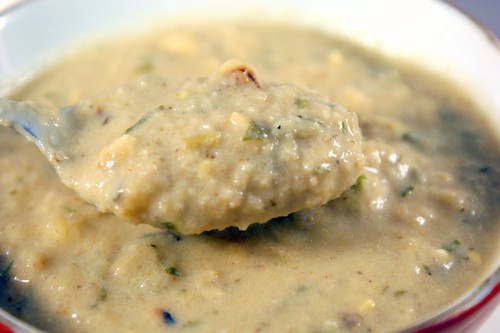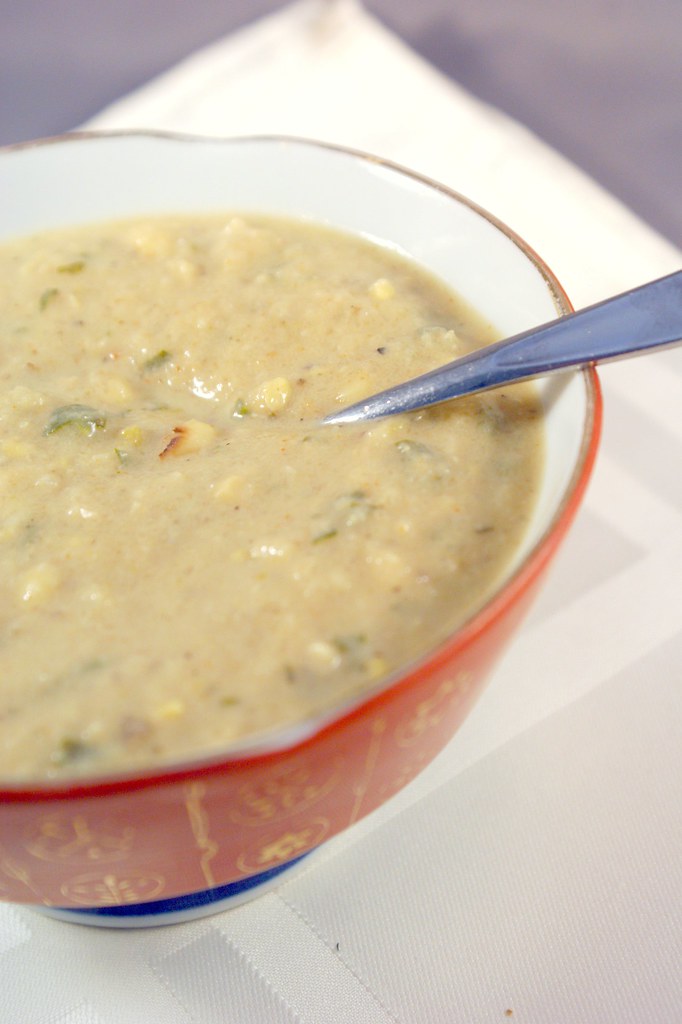Remember my last giveaway? It was just last month, actually. Apparently it was such a success that a representative of CSN stores contacted me again, asking if I’d like to do another one. Naturally, I said I would love to! I mean, do you all have a problem with me trying to hook you up with free money to an online store that sells everything from cookware to cheap bedroom furniture? No, I thought not. And if you do...well you can just skip to the recipe at the bottom. Away with you!
So just like last time, one lucky winner will be awarded a one-time-use $35 gift certificate, good at any of CSN’s 200+ online stores. To enter leave a comment on this post telling me whether you’re scrounging for every last late summer recipe you can find, or if you’re over it and ready for fall. Please make sure you provide an email address if there isn’t one linked to your profile.
For additional entries, do one or all of the following, then come back and leave a separate comment for each, letting me know the deed is done.
- Become a fan of (“Like”) Bananas for Bourbon on Facebook, and if you already are, just say so!
- Subscribe to my blog via an RSS feed (just click that “Follow” button in the toolbar on the right), and if you already do, just say so!
- Post a link to this giveaway on your blog, and let me know about it.
The rules: open to US and Canada residents only, as that is where CSN store's products ship. The giveaway closes on Thursday, September 30th at 11:59pm PST. The winner will be selected by a random number generator and announced (and contacted!) sometime on Friday.
And by a total coincidence, just like the last giveaway was paired with a Stonewall Kitchen sauce recipe, it just happens that today’s recipe is also courtesy of my very giving friend who sent me that awesome care package all those weeks ago. The sauce I was most excited to try was the Vidalia Onion Fig sauce. I have a thing for figs, see. Can a fruit be meaty? I think figs kinda are. The minute I saw it, I thought of doing a glaze on a pork loin. Don’t ask me why. Then I thought caramelized onions would go awesome with pork glazed with an onion sauce. Then I thought it would all sit beautifully atop a soft, creamy bed of polenta. Then my mouth watered and I made it. A few weeks later...but nevermind that.
Let’s talk about the pork. First off, I brined it. Have you ever brined pork? Have you ever brined chicken? Maybe a turkey for Thanksgiving? It’s truly amazing what it does for the flavor and texture of meat and poultry. If you’re not hip to the lingo, brining is when you soak your meat in salt water for several hours before you cook it, which helps prevent it from drying out during cooking, so you end up with moist, tender deliciousness (Wikipedia explains it far better than I can). Brining is not the time to be timid with salt. You want a saturated solution, so it uses a lot. But don’t worry, you’ll rinse it off after the soak, so it won’t make your finished dish taste like the sea. Promise. Since I was grilling a rather large and lean piece of pork, a brine was the right way to go. For a more delicate cut of meat, like tenderloin, I wouldn’t say brining would be necessary, but I’m sure it would be delicious just the same. I chose to grill because I wanted a nice caramelized crust on the outside (I’m sure oven roasting would be tasty as well for the colder months), and I’m glad I did because, man oh man, was this pork ever delicious. Juicy, tender, and sweet thanks to the vidalia onion fig sauce.
I love to pair meat with caramelized onions. Their soft texture and sweet, mellowed onion flavor just go so nicely. I actually was experiencing some recipe-writing-block when trying to type this out, so I sent it to my
With the polenta, I thought the flavors came together so well. Everything had a sweet element to it, but surprisingly, I didn’t find it too sweet at all. Well the sauce was too sweet on it’s own, just like the ginger wasabi sauce (sugar was again the first ingredient), but with a dab on a piece of pork with the onions and polenta? Yum. It added a kick of flavor that was needed, and intended, and the onion flavor really came through. Next time I might try mixing some fresh thyme into the polenta or with the onions, but I was totally out of fresh herbs. There are definitely ways to make this dish your own, but I thought my version was a winner.
Guess that’s two sauces down, and two to go! Stay tuned!
Vidalia Onion Fig Glazed Grilled Pork Loin
Makes about 8 servings
For the brine:
1/4 cup salt
1/4 cup honey
10 black peppercorns
1 TB dried rosemary
2 TB onion powder
1 bay leaf
~3 cups water
2lb pork loin
For the rub:
1/2 tsp salt
1/2 tsp ground pepper
1/2 tsp celery salt
1/2 tsp mustard powder
For the glaze:
1/2 cup Stonewall Kitchen Vidalia Onion Fig Sauce (plus more for the final dish)
To brine the pork:
In a gallon-sized ziplock bag, combine the salt and honey with about 3 cups of water. Scrunch the bag to agitate the water and dissolve the salt. Add the peppercorns, rosemary, onion powder, and bay leaf. Add the pork loin and enough water until it is fully submerged in the brine. Let the pork brine for at least 8 hours, overnight is even better.
Note: Don’t trim the layer of fat off the pork yet. You’re going to be using it later.
To grill the pork:
- A little before you plan to grill it, remove the pork from the brine and give it a good rinse to get the excess salt off. Pat it dry with paper towels and let it air dry for a few minutes.
- Cut the fat layer off the top of the loin, doing your best to keep it in one big piece. Set it aside. Combine all the ingredients for the rub in a small bowl and rub it over the pork until it is evenly coated. Using butcher’s twine, tie the fat layer back onto the pork. This will keep it moist and add flavor while it cooks. But if it grosses you out or is too finicky for you, just skip that part.
- With the grill heated to medium-low, place the pork on the grill, fat-side down, and cover. After 3-5 minutes, turn the pork over and grill for another 3-5 minutes. Cut the butcher’s twine, and remove and discard the fat layer. Turn the pork over again so the side that was covered with fat can get some good grill marks, another 3 minutes or so. Now is the time to glaze. Brush the onion fig sauce generously over the pork and continue to grill, flipping every few minutes. I did a second coating of glaze once the first coat did a turn over the flames, but that’s optional.
- When the glaze is caramelized and the pork has reached an internal temperature of about about 140 degrees (this will vary based on the size your particular cut of loin), about 15-20 minutes, remove it from the grill and let it rest, covered loosely with some aluminum foil, for about 10 minutes.
Note: If you don’t have this fig sauce, fear not! There are plenty of other options. You could mix some fig jam, balsamic vinegar, and olive oil. If you don’t like figs, how about blackberry? Or a cranberry compote? You just need something a bit sweet (preferably with a hint of savory) that is going to bring a lot of flavor.
Caramelized Onions
Makes about 2 cups
4 medium yellow onions, sliced into 1/4 inch wide half moons
1 TB olive oil
1/4 tsp kosher salt
1 TB balsamic vinegar
1 TB Marsala wine
- Heat the olive oil in a large skillet over medium heat. Add the onions and salt. When the onions have given off their water but before they begin to brown, turn the heat down to medium-low (or all the way to low if it’s a hot burner). You want to make sure the onions are cooking, but not browning, so you may want to play around with the flame a bit to ensure they aren’t cooking too hot or too cold, and you’ll want to stir them up occasionally. The slow cooking will allow all the water to cook away and the sugars to caramelize until they are sweet and delicious.
- After about 45 minutes, (Yes, you read right. You can’t rush perfection!) the onions should be well caramelized. They’ll be considerably shrunken because all the water will have cooked out, and they’ll be golden brown to dark brown in color. Add the balsamic vinegar and Marsala wine and cook for another minute, just until they are incorporated.
Creamy Polenta
Makes about 6 cups
4 1/2 cups water
1 1/2 cups polenta
1/4 cup heavy cream
1/4 cup Marsala wine
1/4 tsp kosher salt
1/2 tsp ground black pepper
1/2 cup Gruyere cheese, grated
1/2 cup Parmesan cheese, grated
- In a medium saucepan, bring the water to a boil. While stirring constantly, very slowly sprinkle in the polenta. The slower you add, supposedly, the creamier it will be. Reduce the heat to low and cook for about 5 minutes, stirring occasionally, until the polenta is thickened and the water is fully absorbed.
- Add the cream, wine, salt, and pepper, and cook for another 2-3 minutes, until everything is incorporated.
- Add the cheeses, stirring until they are fully melted. Adjust the seasonings to taste.
To assemble this dinner of deliciousness, spoon an appropriate amount of polenta on your plate. Top the polenta with a helping of caramelized onions, and then a few slices of pork. Pour an additional dab of the vidalia onion fig sauce over the pork and enjoy!
